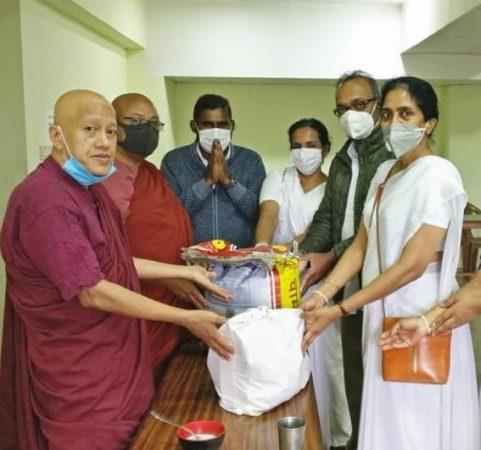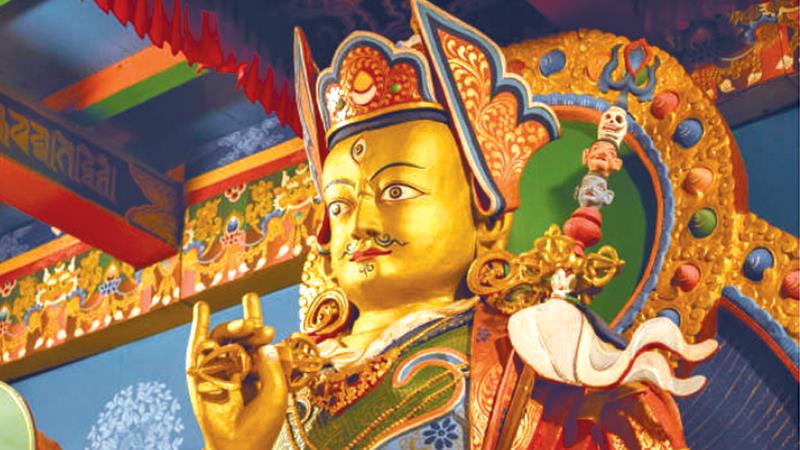
The Place Of Theravada Buddhism In Nepal
But if one looks at the actual beliefs and practices of the Nepalese (barring of course the Christians and Muslims) they are a blend of the Hindu and the Buddhist. Except for the orthodox Hindus and Buddhists, the rest of the Hindus and Buddhists observe the practices of both religions.
In fact, in the case of many castes and communities, it is difficult brand them as Hindu or Buddhist exclusively. They seem to be both at the same time.
ADVERTISEMENTHowever, the Nepalese do brand themselves as Hindu or Buddhist when a formal identification is sought as in a census.
And among Buddhists, there are those who brand themselves as Mahayana (or Vajrayana) or Theravada. However, this has not been so always says Ramesh Chandra Tiwari in his paper entitled:“Social cultural aspects of Theravada Buddhism in Nepal” published by The Journal of the International Association of Buddhist Studies in 1983.
In the past, there had been suppression of Buddhists by some Hindu rulers, especially the Ranas, who were hereditary Prime Ministers of the Shah dynasty till 1951.
In the movement against the dictatorial Ranas, Nepalese Buddhists were keen participants, though the leaders of the Buddhists in this movement were Tibetan Lamas.
Tibetan Lamas had a high position among the Buddhists of Nepal because Tibet was an entirely Buddhist country ruled by spiritual leader, the Dalai Lama.
However, in this context mention must be made of the contribution of a Theravada bhikkhu Ven. Chandramani Maha Thera from Kushinagara located in the Indian State of Uttar Pradesh, where the Buddha attained Parinirvana.
Buddhism has a very long history in Nepal. It was the predominant religion for a long time since the 6 th. Century BC. The Buddha (563 to 483 BC) was born in Lumbini in Nepal. Though his work was mostly in North India in what is now Uttar Pradesh and Bihar, there was a close connection between these places and Nepal all through history.
The Buddhism practised in Nepal down the ages has been of the Mahayana school and its sub-category the Vajrayana school. Theravada Buddhism came to Nepal very recently, in the early decades of the 20th, when Nepalese Buddhists came into contact with the Theravada Buddhists of Myanmar, Sri Lanka and Thailand.
In the 1950s, Theravada Buddhism in Nepal got a further boost due to the influence of the Buddhist movement in India led by Dr. R who had adopted Theravada Buddhism in the 1950s rebelling against the oppressive caste system associated with Hinduism. Dr was the author of the Indian Constitution.
Newars and Buddhism
Nepalese Buddhism is largely associated with the Newars of the Kathmandu Valley. The Newars have a distinct culture and language (Newari). They are predominantly Hindu, but over 8 percent are Buddhist. Most of the Buddhists in Nepal, including Theravada Buddhists, are Newars.
The Newars are a very powerful community in Nepal, both politically and economically. They also dominate Nepal's trade and agriculture. They are the majority community in the Kathmandu Valley, where the country's capital Kathmandu is located. The Kathmandu Valley is the most developed in Nepal having the largest urban agglomeration with a population of about 5 million.
Initially, perhaps all Newars were Buddhists. But with the decline of Buddhism in adjacent India in the 12 and 13 th centuries, Buddhism declined in Nepal too. Hinduism had got the upper hand in both countries.
In Nepal, the transition to Hinduism took place during the rule of the Malla dynasty, especially under King Jayasthiti Malla (1382 to 1395 AD). The Mallas were Newars. The Hindu caste system based on“Manusmriti” (the laws of the Sage Manu) was introduced among the Newars.
Under“Manusmriti” Hindu society was divided into four clean or touchable castes, and the fifth one, considered untouchable, was not considered part of the Hindu social order at all. The four touchable castes were Brahmin, Kshatriya, Vaishya and Shudra. A caste code based on Manusmriti was drafted by Brahmins from India.
The Mallas saw the caste system as a way of integrating an amorphous Nepalese society by dividing it into hereditary occupational categories and integrating these to form a compact social order.
But after the Kathmandu valley came under the non-Newar“Gurkha” dynasty of the Shahs in 1769, the hold of Hinduism lessened and Buddhism sprouted afresh.
However, in the 19th Century the Shahs were made titular rulers (rulers without power) by the Ranas who were their hereditary Prime Ministers. The Ranas, who claimed an Indian Rajput or Kshatriya origin, revived Hinduism with a vengeance.
They codified the caste system and presented it as the Mulki Ain or the constitution of the State.
Imposed or not, the caste system was widely accepted in Nepal whether the community concerned was Hindu or Buddhist. Even Theravada Buddhists, who were theoretically against it, accepted it and practiced it.
Relief came in the form of the democracy movement which overthrew the Ranas and installed the Shah dynasty in 1951. Equalitarian ideas, as embodied in Theravada Buddhism, got a fillip from the 1950s onwards.

Theravada Buddhist monks in Nepal being honoured by the Sri Lankan Ambassador Himalee Arunatilaka
Caste among Buddhists
The Newars are divided into Hindus and Buddhists. The Hindus are called Siva Margis and the Buddhists, Buddha Margis. There are 26 castes among the Newars. The highest caste (among both the Hindus and Buddhist Newars) are the priests. The bhikkhus are called Bajracharyas and the Hindu priests Dev Bhajus.
There are no bhikkhus among Nepal's Mahayana Buddhists (bhikkhus are those who live on the charity of the people). But there are bhikkhus and bhikkhunis among the Theravada Buddhists. According to Tiwari, they are learned and fluent in Pali.
The second highest caste among the Newars (both among Hindus and Buddhists), is Shakya. The Shakyas can also officiate as priests but ordinarily they are identified as goldsmiths. The Shakyas are rated high because the Buddha was a Shakya.
About 38 percent of the Theravada bhikkhus are from Shakya caste and 7 percent from the Shereshtha caste. The Shreshtras are rated very high among the Hindus.
The next in line are Udas and Thuladhars, who are traders and artisans. They are wealthy and support the Buddhist Viharas. Jyapus are agriculturists, who are the most numerous caste in the Kahmandu valley. Jyapus, may be either Buddhist or Hindu.
The Manandhars, Chitrakars and Putuwars are exclusively Buddhist. But they are in very small numbers.
There is further division among the Newars. They are the Jupi and the Majupi. From the Jupi one can accept drinking water but from Majupi one cannot. 90 percent of the Newars are Jupi.
Among Mahayana Buddhists, ordination is given only to Bajracharyas and Shakyas. But among the Theravada Buddhists, anyone can be ordained. In earlier times, the Mahayana and Theravada shrines were close to other. But over time, this practice was abandoned, though there has never been antagonism between them. However, both sects can worship in the same Viharas.
Like the Mahayana Buddhists, the Theravada Buddhists worship the Panchabuddhas showing the five different qualities of the Buddha.
The festival of Gunla Dharma held in July-August brings together all Buddhists in Nepal. During this festival, miniature Chaitias (shrines) are built by families and displayed. Buddhist sutras are recited and the Jataka stories are told. At the end of the festival, the Chaitias are immersed in the river.
The Theravada Buddhists, true to their ideology, are campaigning against caste distinctions, though the institution is entrenched in Nepal. They are also promoting the Newari language and culture, in order to preserve the rich diversity of Nepal.
END

Legal Disclaimer:
MENAFN provides the
information “as is” without warranty of any kind. We do not accept
any responsibility or liability for the accuracy, content, images,
videos, licenses, completeness, legality, or reliability of the information
contained in this article. If you have any complaints or copyright
issues related to this article, kindly contact the provider above.

















Comments
No comment